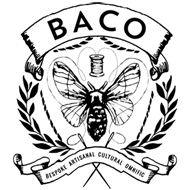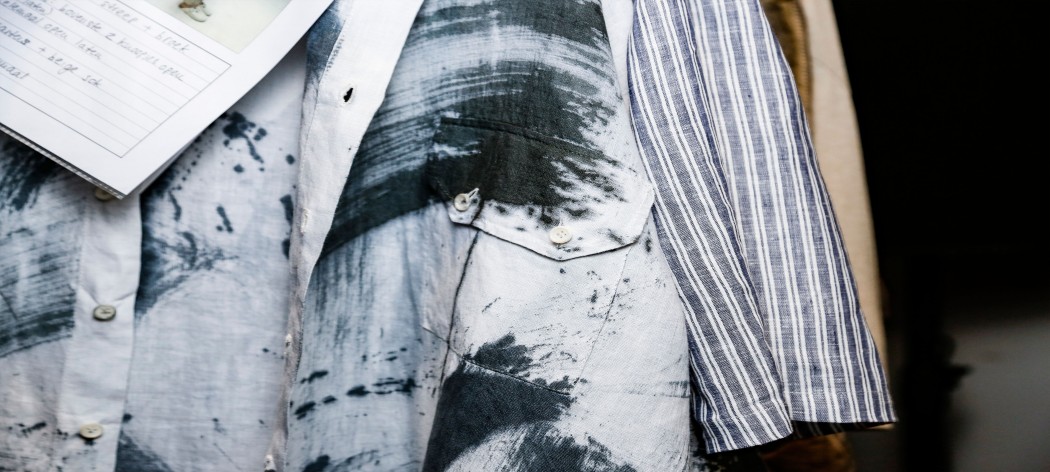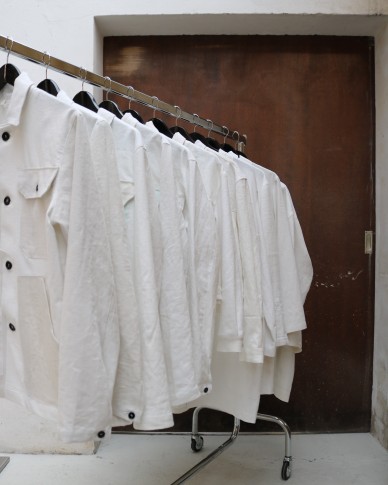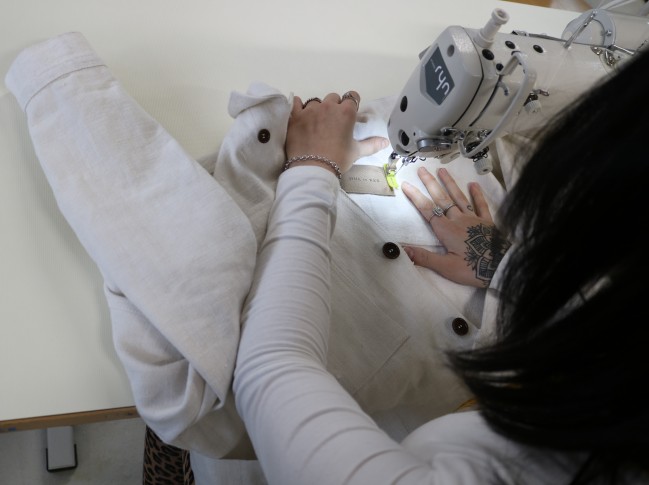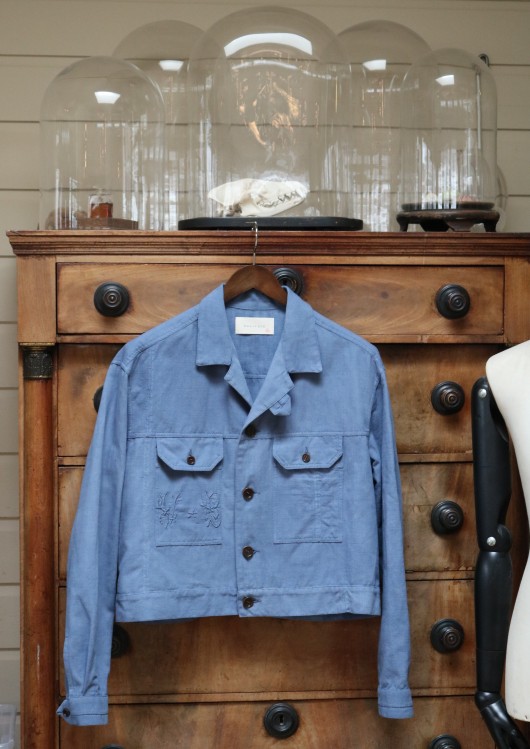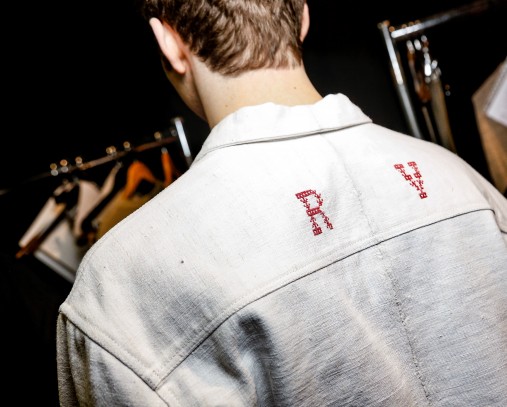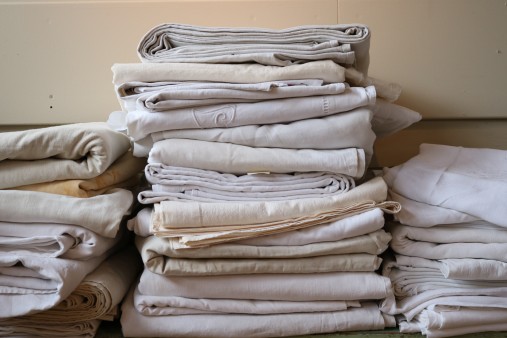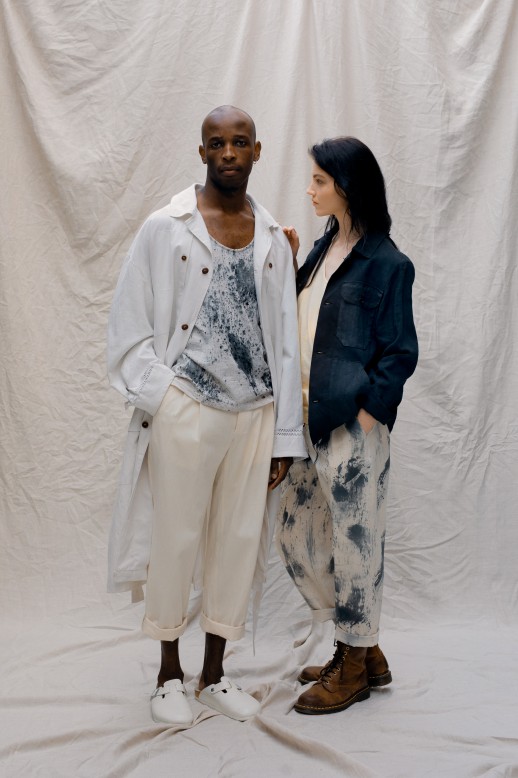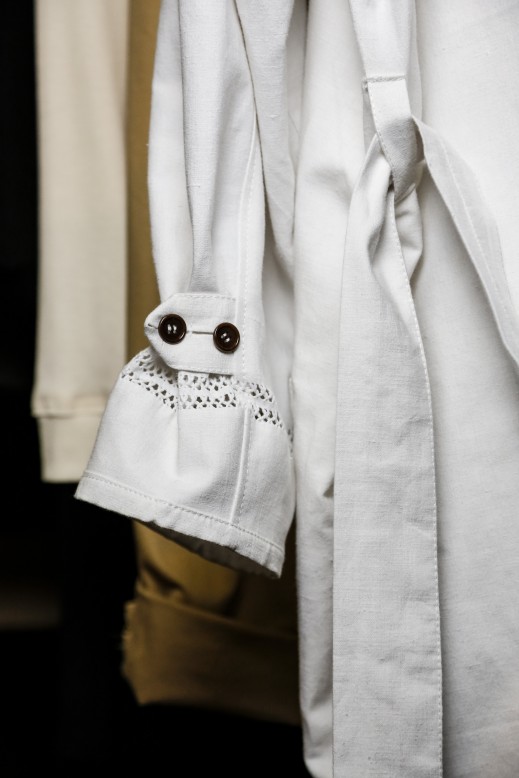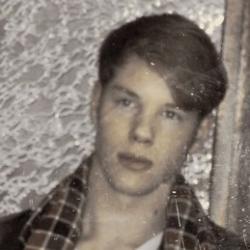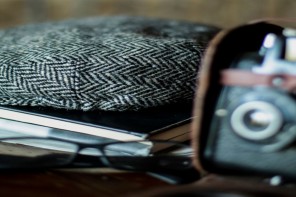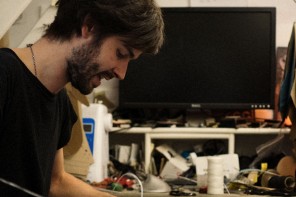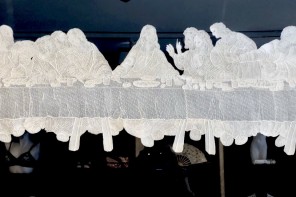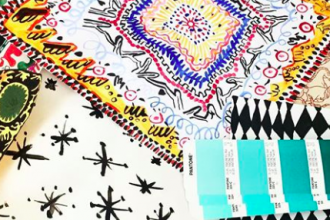By Dominique Emmen
Arnhem, the Netherlands – When wedding gowns and other family heirlooms are passed down from generation to generation they become stories. Designer Sjaak Hullekes has long pondered why the same cannot be true in the world of fashion, which is why he started Hul le Kes, a line of garments that increase in value through storytelling rather than fleeting trends. For the Arnhem-based designer, it is a way to promote the beauty of aging and the value in restoring something.
STUDIO RYN
Hullekes started his career after he graduated from ArtEZ in 2005, the Academy of Art & Design in Arnhem, a school that also shaped designers such as Iris van Herpen and Viktor & Rolf. Throughout the years, Hullekes became known for his unique perspective on menswear with his personal label Sjaak Hullekes, presenting it at fairs like Pitti Uomo. However, despite the recognition, the designer decided to go back to his roots.
“My first brand was starting to move further away from me, but as a designer I want to be connected with the brand, having it close to who I am,” Hullekes said.
This led to a short break and the start of Studio Ryn, a workshop for small-scale productions in a former sawmill building based in Arnhem. The craftspeople are students that have the chance to develop their hand-making skills by learning how to produce garments for a wide range of brands that each has its own signature style.
Studio Ryn was also the place where Hullekes rekindled his love for the art of creating. When the designer realized how he wanted to express himself, Hul le Kes was established.
FRENCH LINEN AND CANDLE STAINS
The style of Hul le Kes can be traced back to the designer’s memories of an upbringing in a peaceful environment, with garden work and trips to flea markets and antique auctions. The colour palette and texture are soft and romantic with natural elements, whilst the cut is a bit more robust, resembling utility wear, interpreted in an artistic manner.
Each garment has been named after influential artists such as Jean Cocteau, Henri Matisse or Jean-Michel Basquiat. However, rather than solely taking inspiration from the art itself, the main focus is on how artists dress themselves. Often they prefer to wear practical clothing – loose pants and long shirts with splashes of paint everywhere.
“In the clothing I wear you can always discover a spot or an uneven detail. I had to apply this in my new label,” Hullekes mentioned, talking about his choice of using only leftover materials or fabrics that he found on flea markets.
In particular, the use of French linen is a remarkable part of the Hul le Kes identity. In the past, these fabrics have been stitched together all by hand and often bear embroidered family initials on them. Sometimes candle stains can be found on them as well, but according to Sjaak this only makes the garment more unique and extraordinary, after the dyeing process.
Taking pleasure in these imperfections is what Sjaak Hullekes takes from the Japanese philosophy of Wabi-Sabi. This is a world view in which aesthetics of something imperfect or incomplete is seen as something beautiful. With roughness, simplicity and modesty as its essence, this offers a fresh perspective on Western material culture.
FULL CIRCLE
Since every item is made by using antique fabrics and leftover materials, no single garment is the same and each style only comes in small quantities. Even the tags, labels and packaging come from flea markets or leftover stock and are personalized for Hul le Kes at Studio Ryn.
The same goes for the passports accompanying each piece of clothing. All passports have a unique number and include information about the garment, such as the artist’s name and when it’s made. Instead of collecting travel stamps, owners can write down their memories and experiences whilst wearing the jacket, shirt or pair of pants. In this way, Sjaak Hullekes wants to give a soul to his creations and raise awareness of the life cycle of clothing.
What makes everything full circle is the return policy that allows customers to return a purchased item, even after years, and receive a refund of 15% for a future purchase.
“If they decide to return a shirt I can restore it or make it into a pair of pants. Like this there won’t be unnecessary waste anymore,” Hullekes said.
The beauty of it all is when you pass down the garment or decide to return it, the new owner will have a unique story to share whenever the garment is worn.
PRICE: €200-€700
WHERE TO BUY: Exclusive boutiques such as Margreeth Olsthoorn in Rotterdam and Margriet Nannings in Amsterdam. Also available online at http://www.hullekes.com.
